Just starting out in the world of microphones? Want a Shure mic (because that’s the mic your heroes use) and wondering what the differences between Shure PGA, SM, Beta, and KSM are? We’ve got you covered with our complete guide to Shure live mics.
We’ll explain the key differences between each range, namely their prices and who each mic is best for. More specifically, we’ll look at live vocal mics, but some can also be used for broadcasting or podcasting too!
Who are the mics aimed at?
The best way to categorise each series is as follows:
- Shure PG Alta – beginner
- Shure SM – industry-standard used by everyone
- Shure Beta – upgraded features for pro musicians
- Shure KSM – absolute professionals
We’ll get to price points and features in a little while, but this pretty much summarises who each range is for.
Disclaimer: all Shure products are built like tanks and will probably outlive you, but some, like the Beta and KSM series’, have upgraded internal shock mounting – hence the higher price point.
Shure PG Alta series
Price point – low. Aimed at beginners with a budget upwards of £40.
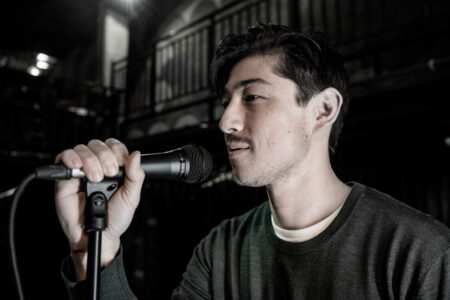 Shure microphones are the industry standard when it comes to live vocal mics for professionals. They’re also the industry standard for new and upcoming performing artists who are on a budget but still want exceptional performance.
Shure microphones are the industry standard when it comes to live vocal mics for professionals. They’re also the industry standard for new and upcoming performing artists who are on a budget but still want exceptional performance.
The Shure PG Alta (PGA) range is predominantly aimed at the younger generation owing to the lower price point of their key live vocal mics – the Shure PGA48 and Shure PGA58 which retail for around £40-60 respectively.
Live vocalists and recording artists will be able to enjoy pro-level sound on a budget, with rock-solid reliability to boot.
They might not have as much detail as the Shure SM series, but if you’re just starting in a band or need multiple microphones for your theatre or school production, the Shure PG Alta series is ideal.
Which vocal mics are in the Shure PG Alta series?
The two main vocal mics in the Shure PGA range are the PGA48 and PGA58. They’re incredibly reliable and hard-working vocal mics, capable of withstanding years of abuse, mic drops, and sweat from the most active of singers.
Both mics are also dynamic mics, which means they’re not as sensitive to damage or louder sounds. The addition of a mesh grille, a signature look for the Shure series, then protects the capsule whilst reducing plosive noises.
Shure PGA48
The PGA48 Cardioid Dynamic Microphone is specifically designed for clear and clean vocals, offering a cardioid polar pattern and a modest but highly useable frequency response of 70Hz – 15kHz.
It provides all the detail you need when you’re performing live, without the unwanted – and sometimes overbearing – high and low-end frequency emphasis. Basically, this mic will make you sound good, even if you’re not a particularly confident singer!
The PGA48 is ideal for public speaking, karaoke, schools, and churches – places where you don’t need high levels of sonic detail. And, of course, it’s great if you’re on a budget.
Shure PGA58
The PGA58 Cardioid Dynamic Vocal Microphone is designed for lead and backup vocal performances that need to be heard clearly and accurately. It offers a tailored frequency response of 50Hz-16kHz, which bumps us into the near-professional field of sound quality.
Those with deeper voices will appreciate the lower frequency response with slight bass roll-off and the tweaked high-end detail. This means you don’t get the unwanted boominess or proximity effect if you place your mouth on the mic, as most singers tend to do. You do, however, get the higher-end detail, which is ideal for singing lessons and vocalists who want to be able to perform with their own mic on a budget.
The addition of a professional-level Neodymium magnet ensures you have a higher output and can be heard on stage. A built-in on-off switch gives you onstage control when you need it.
Just like every Shure live vocal mic, both of these mics are built like tanks, perfect for handheld operation.
Who is the Shure PG Alta series for?
Beginners
Venue owners
Cafe owners
Practice rooms
Schools
New bands just starting out
Smaller PA systems
Shop now | Shure PG Alta vocal microphones
Shure SM series
Price point – higher, but affordable. Aimed at serious performers with a budget upwards of £80.
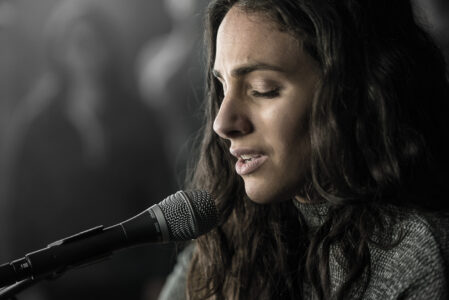 The Shure SM series, which stands for “Studio Microphone”, is the industry standard live vocal microphone series.
The Shure SM series, which stands for “Studio Microphone”, is the industry standard live vocal microphone series.
If you’ve ever been to a gig, you’ve seen a Shure SM58 being used by a vocalist. SM58 mics are absolutely everywhere – in venues, churches, schools, live theatres, festivals, and recording studios all over the world.
If you’re still on a budget, albeit a slightly higher one, and you’re ready to step into the professional realms of live vocal performance or backup singing, the SM series is the way to go.
It offers incredible frequency response, superb off-axis sound rejection, and a near-indestructible chassis that you’re almost guaranteed never to break.
The SM series is designed to be used and abused, capable of withstanding throws, drops, sweat, and the loudest of screaming vocalists.
Which vocal mics are in the Shure SM series?
The Shure SM series comprises three main microphones: the SM48, SM58, and SM86. These are two dynamic microphones and one condenser with optional on/off switches – all of which are designed for live vocal applications.
Shure SM48 Dynamic Microphone
The Shure SM48 Dynamic Mic pushes us into pro-level live vocals, offering a true-cardioid pickup pattern that rejects the off-axis noise from other musicians onstage.
Its key benefit is the bright mid-range and low-frequency roll-off, which retains the power of your vocals, whilst letting you get closer without the proximity effect creeping in – that’s the unwanted boom or low-end feedback that can sometimes happen.
The 55Hz – 14kHz frequency response is perfect for all styles of rock, indie, and guitar music as you probably won’t need low-end depth or top-end sparkle. Think Black Rebel Motorcycle Club and you’ll get the idea.
The built-in pop filter minimises noise and protects the capsule when you inevitably drop the mic.
Shure SM58 Dynamic Cardioid Vocal Microphone
The Shure SM58 is the absolute industry standard mic.
Unless you’re singing like Adele or Michael Bublé, this is the live vocal microphone that you’ll never have to upgrade.
A solid all-rounder, it’s nigh on indestructible, providing incredibly detailed sound without becoming too overbearing. The cardioid polar pattern perfectly rejects off-axis noise and the 50Hz – 15kHz frequency response means you can record comfortably.
Shure SM86 Condenser Vocal Microphone
If you are a crooner, a singer with an extremely wide range, or have a particularly detailed voice with great control over your pitched notes, you’ll appreciate the SM86. It provides studio quality detail and response in the live arena.
This is a condenser microphone designed for live use, and yes you can use a condenser for live vocals. The key benefit of the condenser capsule is its extended high-frequency response of 15Hz – 18kHz which is specifically tuned and tailored for vocal performance. It offers a clear reproduction of your voice – more so than any other mic in the Shure SM range. You’ll sound exactly how you want onstage.
There’s also an upgraded built-in shock mount which protects the capsule and reduces handling noise. A two-stage pop filter then reduces the plosives that condenser mics have a habit of picking up.
When explaining the Shure SM range, it’s less a case of good, better, and best, but more a case of good, best, and different.
If you need a hard-wearing microphone that’ll stand years of touring on a budget, the SM48 is for you. But if you need a mic that you’ll never have to upgrade again, opt for the SM58. And finally, if you’re a professional-level singer, confident in your abilities and microphone control, the SM86 is ideal.
Who is the Shure SM series for?
- Gigging musicians
- Venue owners
- Practice rooms
- Any venue with live sound
- Churches
- Schools
Shop now | Shure SM vocal microphones
Shure Beta series
Price point – a lot higher, but attainable. Aimed at serious performers with a budget upwards of £120.
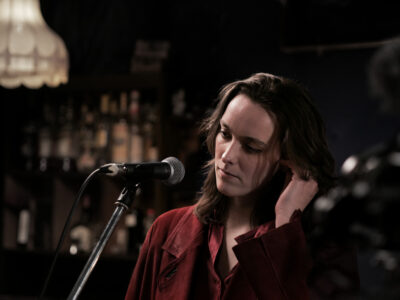 Overall the Shure Beta vocal mic range takes the already-stellar performance of the SM vocal mic range and adds a tighter supercardioid polar pattern on two models for better off-axis rejection and higher gain before feedback occurs.
Overall the Shure Beta vocal mic range takes the already-stellar performance of the SM vocal mic range and adds a tighter supercardioid polar pattern on two models for better off-axis rejection and higher gain before feedback occurs.
It also has an increased output for vocalists who want to stand out, a greater frequency response, and a host of physical upgrades like an advanced shock mount system and better plosive protection.
Which vocal mics are in the Shure Beta series?
The three main vocal mics in the Shure Beta series are the Beta 58A, Beta 87A, and Beta 87C, all of which are perfect for touring professionals. The right one for you depends on your voice and whether you want a dynamic or cardioid sound.
Shure Beta 58A Dynamic Microphone
The Shure Beta 58A is the upgraded version of the SM58. It offers a supercardioid polar pattern which provides better off-axis rejection, even at higher volumes. This is perfect for those who sing up close to the mic – it picks up your voice and only your voice, regardless of volume.
Your sound engineer isn’t going to hear your drummer or guitarist through your mic as the tight pickup pattern not only rejects everything around it but also allows the microphone to be driven at higher gain without feedback creeping in. It’s ideal for rock vocals that need a little grit or quieter singers in need of some extra oomph.
The specifically tailored frequency of response of 50Hz – 16kHz is designed to bring out the best registers of your live vocal performance without the unwanted high-end detail or low-end boom that can cause feedback. This is well-suited to screaming vocalists.
Additionally, the hotter output provides a 4dB boost, so casual, sing-speak singers will be heard in detail – Julian Casablancas, I’m looking at you!
Shure Beta 87A Vocal Microphone
 The Shure Beta 87A condenser microphone is so good at capturing the detail in your voice that it can be used for field recording, podcasting, and broadcasting as well as live vocal performances.
The Shure Beta 87A condenser microphone is so good at capturing the detail in your voice that it can be used for field recording, podcasting, and broadcasting as well as live vocal performances.
With a supercardioid polar pickup pattern, this mic rejects any off-axis noise around or behind the microphone. It then has a condenser capsule and 50 to 20,000 Hz frequency response for incredibly detailed high-end frequencies without the unwanted low-end boominess. The team at Shure have designed the 87A with a low-end roll-off, so you can get as close as you need to without the bass distortion or proximity effect kicking in.
A key benefit of the 87A is the presence rise at the high end of the frequency response. This ensures you’re getting all the detail you need, even when you’re really hitting those higher notes and benefitting from a brightened upper midrange.
Compared to the SM87, this mic provides slightly better gain before feedback, which is perfect for speech applications in a live scenario. You can drive the mic without worry. The null points at approx. 125 degrees – ideal for vocalists who perform with other musicians, especially those in worship bands. Other musicians onstage can be playing around you and the mic will only pick up your voice.
Again, there’s a built-in pop filter and advanced shock mount system which reduces handling noise and protects the capsule from the harsh rigours of touring or field recording.
Shure Beta 87C Condenser Microphone
The Shure Beta 87C is almost identical to the 87A, with one major difference – the polar pattern. The Shure Beta 87C has a cardioid polar pattern. Now you might think, “oh but supercardioid is much better” – but that’s only true in certain scenarios.
This mic was designed specifically for vocalists using in-ear monitors. Its cardioid pattern picks up a touch of the surrounding environment, giving more ‘life’ and natural sound to your in-ear mix. This is partly why vocalists have one monitor in and the other hanging out – it gives them a sense of the surrounding atmosphere.
The 87A, on the other hand, is better for those using floor monitors as the supercardioid pickup pattern allows for greater gain before feedback.
Shure’s Beta 87C is another microphone that’s suited to live vocalists surrounded by musicians. The volume boost of 4dB and tailored frequency response of 50Hz – 20kHz ensure you stand out in the mix when you need it most.
If you use in-ear monitors, the Shure Beta 87C is your better option. However, if you use floor monitors, the Beta 87A is likely to be the mic for you.
Who is the Shure Beta series for?
- Professional musicians
- Those with good mic control
- Live performance artists
- Theatres
- Solo singers
Shop now | Shure Beta vocal microphones
Shure KSM series
Price point – very high. Aimed at professional performers, sound engineers, and studio owners with a budget upwards of £300.
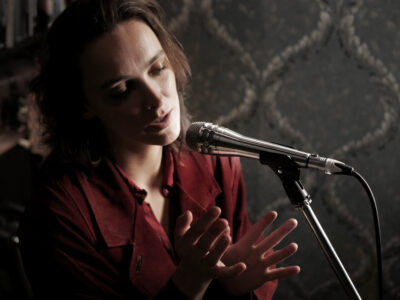 The Shure KSM microphone range, which stands for Kondenser Studio Microphone, offers absolutely unparalleled audio quality for live and studio vocalists, broadcast, field recording artists, and podcasters.
The Shure KSM microphone range, which stands for Kondenser Studio Microphone, offers absolutely unparalleled audio quality for live and studio vocalists, broadcast, field recording artists, and podcasters.
This is the live vocal mic for those who know exactly what they want when it comes to sound quality on stage.
There are two live vocal microphones in the KSM range: the Shure KSM8 Dual Diaphragm Dynamic Microphone and the Shure KSM9 Cardioid and Supercardioid Condenser Mic. Both have dual diaphragms, but the KSM9 has a switchable polar pattern which is ideal for changing environments.
Which vocal mics are in the Shure KSM series?
Shure KSM8 Dual Diaphragm Dynamic Microphone
Shure’s KSM8 has been custom-made for live vocal reproduction, providing the near-exact sound of your voice through a PA or recording desk. The main benefit of the dual diaphragm within the KSM8 is its ability to deliver the most authentic sound imaginable and remain very forgiving when it comes to sibilance or plosives in a live scenario.
Its passive diaphragm works in unison with the second high-calibre diaphragm to ensure there are no colouration or artificial changes to the mid and high frequencies. The onboard 40Hz to 16kHz neutral mid/high-frequency response then presents a smooth, consistent sound right across the spectrum. Any tonal variations caused by the proximity effect are completely eradicated.
The new pneumatic shock mount and diaphragm stabilisation system acts the same way a microphone cradle does in the studio, ensuring there’s no handling noise even when you’re moving around.
Finally, the improved pop filter works in conjunction with the cardioid polar pattern, inverted airflow system, and tailored frequency to ensure there is zero sibilance or unwanted harshness. This provides the most accurate representation of your voice – whether you’re singing, speaking, shouting, or screaming onstage.
Shure KSM9 Cardioid and Supercardioid Condenser Mic
The last mic in our guide is the absolute gold-standard option when it comes to world-class live vocal capture – the KSM9.
When you need versatility as well as pinpoint accuracy from a single mic, the Shure KSM9 is the perfect studio and live performance partner. You can rely on it in environments that change unexpectedly, such as a broadcast or field recording scenario.
The KSM9 is essentially a studio-grade vocal mic wrapped up in a hardwearing, live vocal mic chassis. It’s capable of providing both cardioid and supercardioid polar patterns via a handy switch on the inside of the microphone.
The dual-diaphragm completely eradicates the sibilance or unwanted harsh frequencies that can sometimes creep in at higher volumes. And with a broadcast-quality 50Hz – 20kHz frequency response, you’ll get incredible sound at close range without fear of the proximity effect ruining your performance, interview, or live show.
An advanced shock mount system protects the diaphragms within from harm, even if you drop the mic, while simultaneously eradicating handling or stand noise. The subsonic filter within then kills any mechanical vibration rumble below 17Hz, which means you can move it around without affecting your recording or live show. And thanks to the filer, you can even use the mic for podcasting.
Having the ability to switch between cardioid and supercardioid pickup patterns is perfect for either adding a little room ambience into your vocal performance or completely isolating your sound. Just like the Beta 87A and Beta 87C, you might find that you need both options for use with or without in-ear monitors. It’s almost like the Beta 87A and Beta 87C rolled into one, just… better!
The KSM9 is the ultimate, aspirational live vocal microphone for true professionals and easily one of the best live vocal mics ever created. If you can stretch your budget, you’ll never have to worry about poor sound again.
Who is the Shure KSM series for?
- Absolute professionals
- Broadcasting
- Live television
- Theatre production
- Podcast interviews
- Studio engineers
- Touring sound engineers with solo singers
- Solo singers
Shop now | Shure KSM vocal microphones
Final thoughts
When it comes to comparing all the Shure live vocal mics while you consider what to purchase, I always advise that you try and stretch your budget where possible. This means you can put off, or completely avoid, upgrading when you decide to go professional (we believe in you!) and start performing to bigger audiences.
Of course, this is always budget-dependent, but the good thing about Shure mics is that no matter which one you choose, they’ll never let you down. Whether you start from the budget-friendly PG Alta models or go straight for KSM series – you’re in good hands. You may outgrow them, but you’ll never outlive, outperform, or outwear Shure mics.

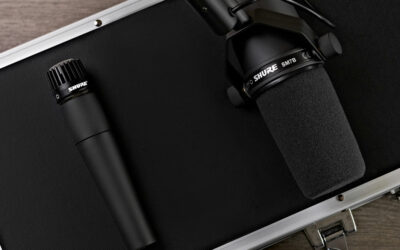
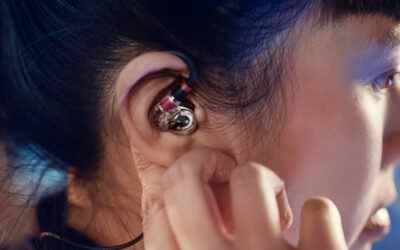
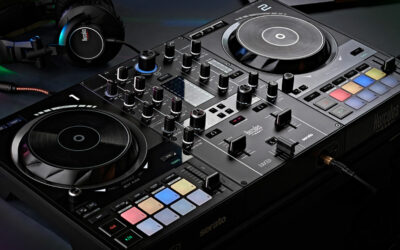

0 Comments